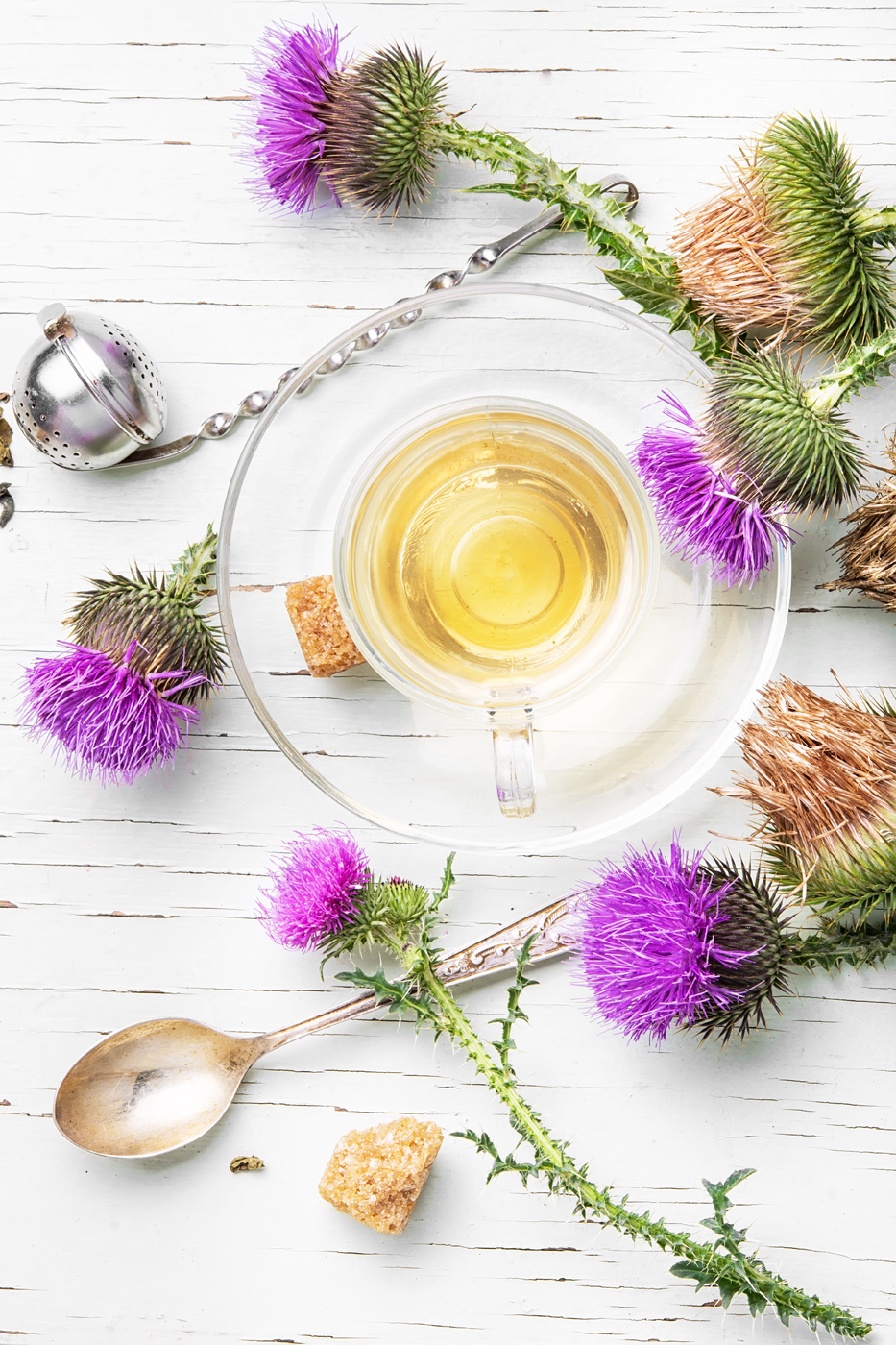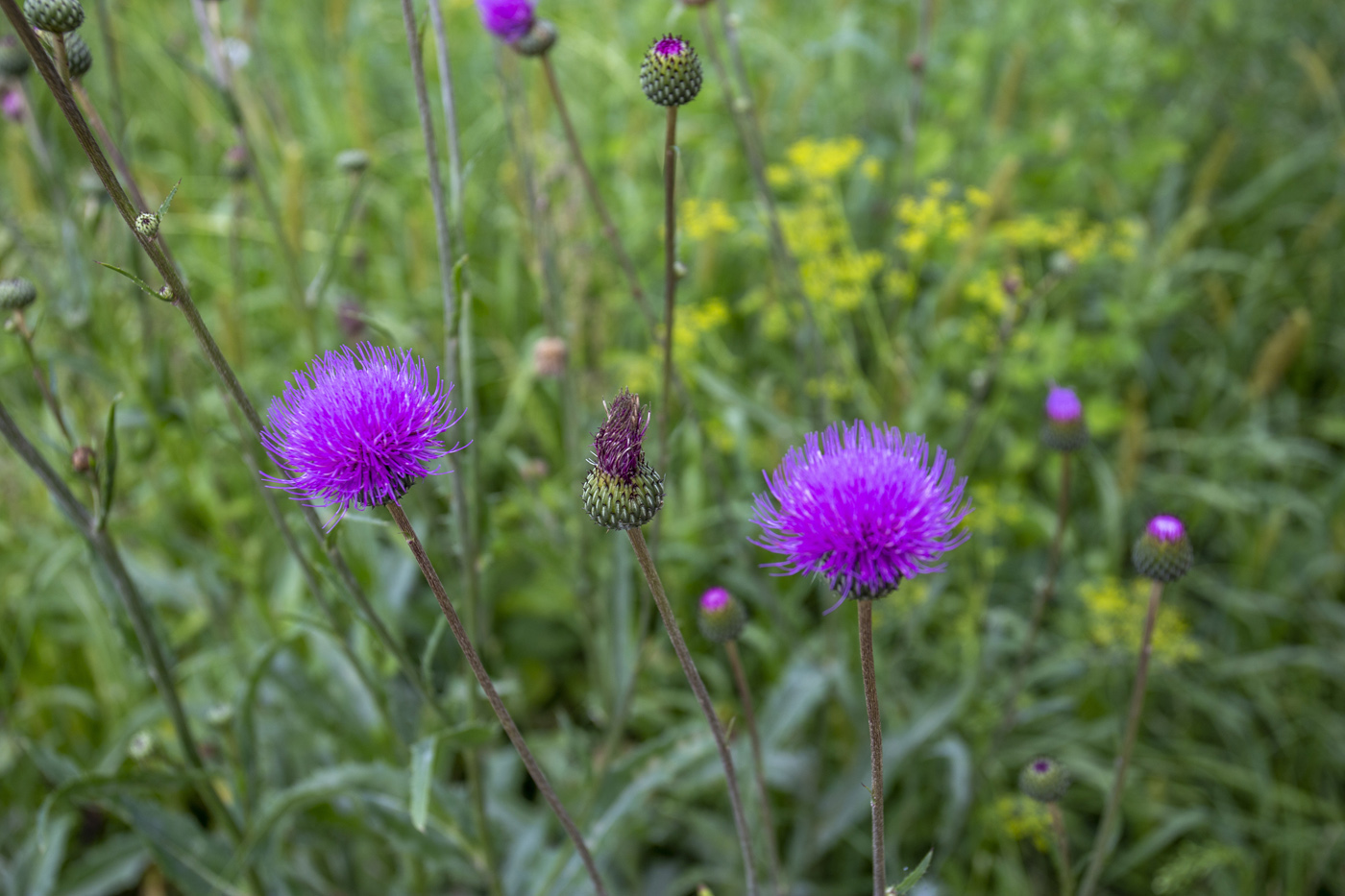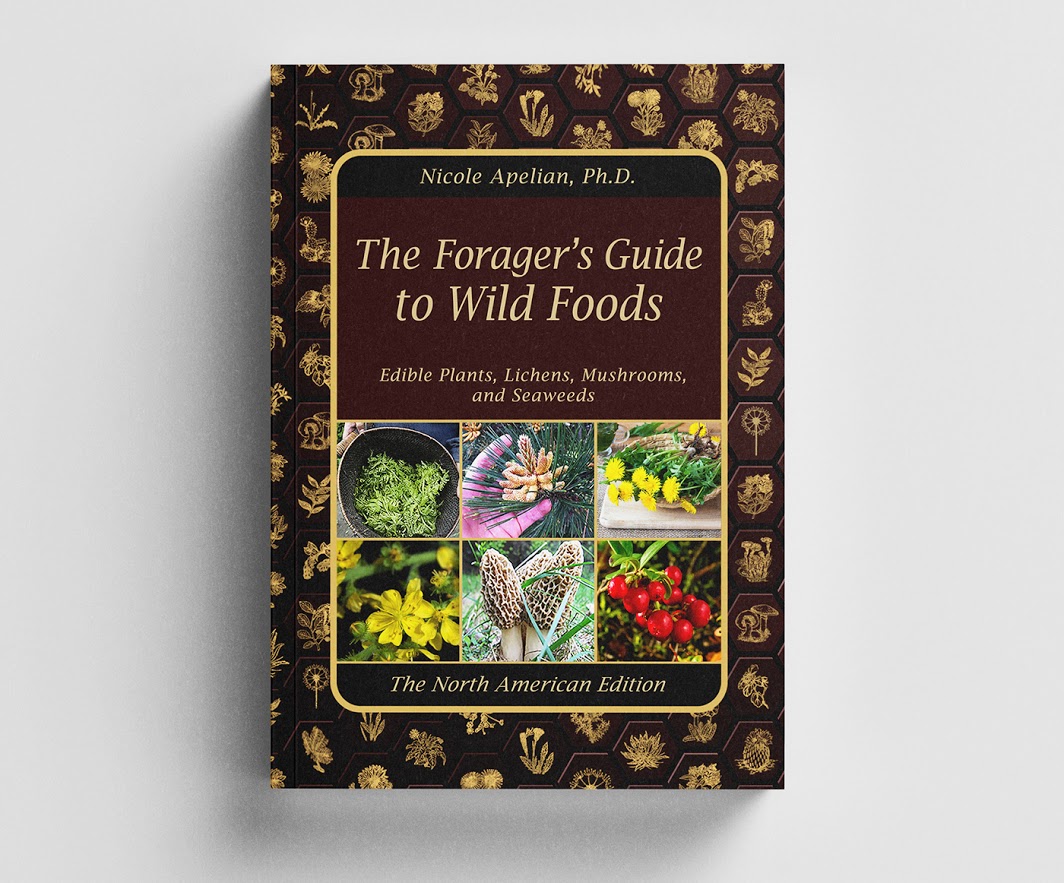A Prickly Weed with Many Uses
With its thorny stems and leaves and distinctive purple or red flower heads, thistle is difficult to miss. Found throughout the world, it is a nutritious food and medicinal herb with many uses. Depending on the species, you can find it growing in grasslands, marshes, waste ground, or clay soil.
For our purposes here, we will be focusing on plume thistle (Cirsium spp.). It grows 2-4 ft. (0.6-1.2m) and has long, feathery plumes. Typical of all thistles, it has sharp prickles on the leaves and stem. The flower head is bulb-shaped and can grow to over 1 1/2 inches (4 cm) and has either purple or crimson-colored petals.
A Nutrient-Dense Wild Food
High in fiber, protein phosphorus, magnesium, calcium, copper, and zinc, thistle excels nutritionally, especially when compared with cultivated vegetables. In fact, Portugal markets sell a range of different thistles in the springtime as a nutritious staple food. Findings published in the book Ethnobotany in The New Europe confirm that eating wild thistle is an excellent source of nutrition and has outstanding medicinal value. Moreover, the seeds of plume thistle are an excellent herbal remedy for helping to detoxify and regenerate the liver. You can also make tea from the leaves and/or roots to improve digestion and calm diarrhea.

How to Harvest and Use Plume Thistle
When you venture outdoors to collect thistle, be prepared with heavy, puncture-proof gloves and a sharp knife. For the most tender and sweet thistle, harvest the mid-ribs and younger leaves in the springtime when growth is vigorous. For best results, blanch first in boiling water to remove the prickles, then cook like spinach.
Plume thistle blooms in the spring and lasts through autumn. Choose the flower buds (chokes) that haven’t yet unfurled. These young flower buds can be used in a salad or enjoyed as a garnish before they grow spikes. However, my favorite way to prepare the young flowers is to cook them like an artichoke! You can harvest the seeds once the flower heads have dried to be used for tea.
Recipe
Plume Thistle Root Creamy Stew. Ingredients: 2 cups each, chopped, of plume thistle, leek and carrots; 1 cup each, chopped, of cauliflower and broccoli, 1⁄2 chopped onion, 2 cloves of chopped garlic, 2 cups of cream, 1 cup of water, salt and pepper. Cook all vegetables in a pot on medium heat for 15-20 min. Add the cream and water and simmer for another 15- 20 min. Mix with a hand blender until you have the desired consistency. Serve with crusty bread.
The Ultimate Foraging Guide — Now Available!
Learn more about plume thistle and over 400 medicinal and edible wild foods in my new book, The Forager’s Guide to Wild Foods: Edible Plants, Lichens, Mushrooms, and Seaweeds. This wild food guide covers a wide-range of plants across North America.
Wishing you abundant and happy foraging!
Nicole Apelian





